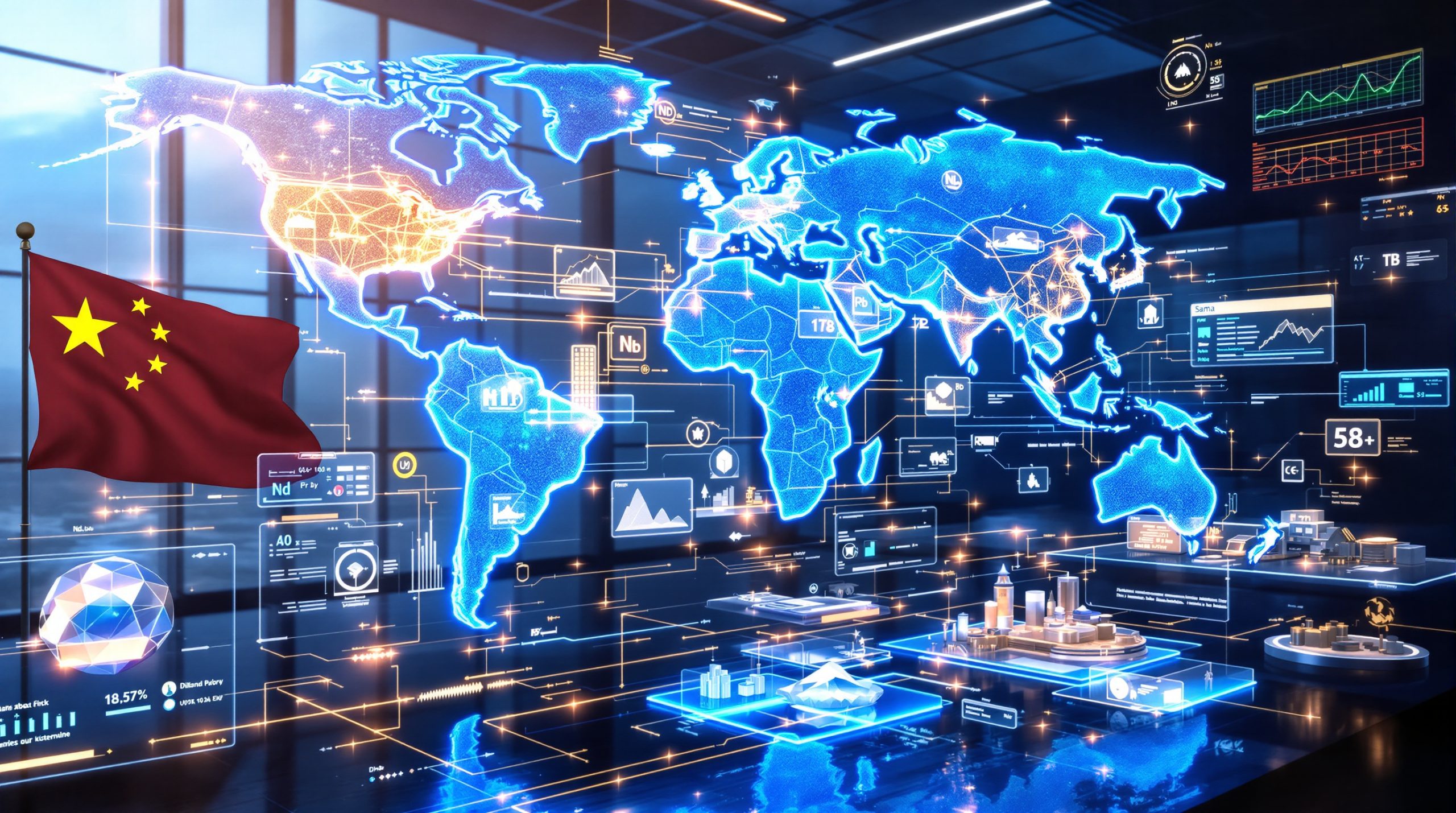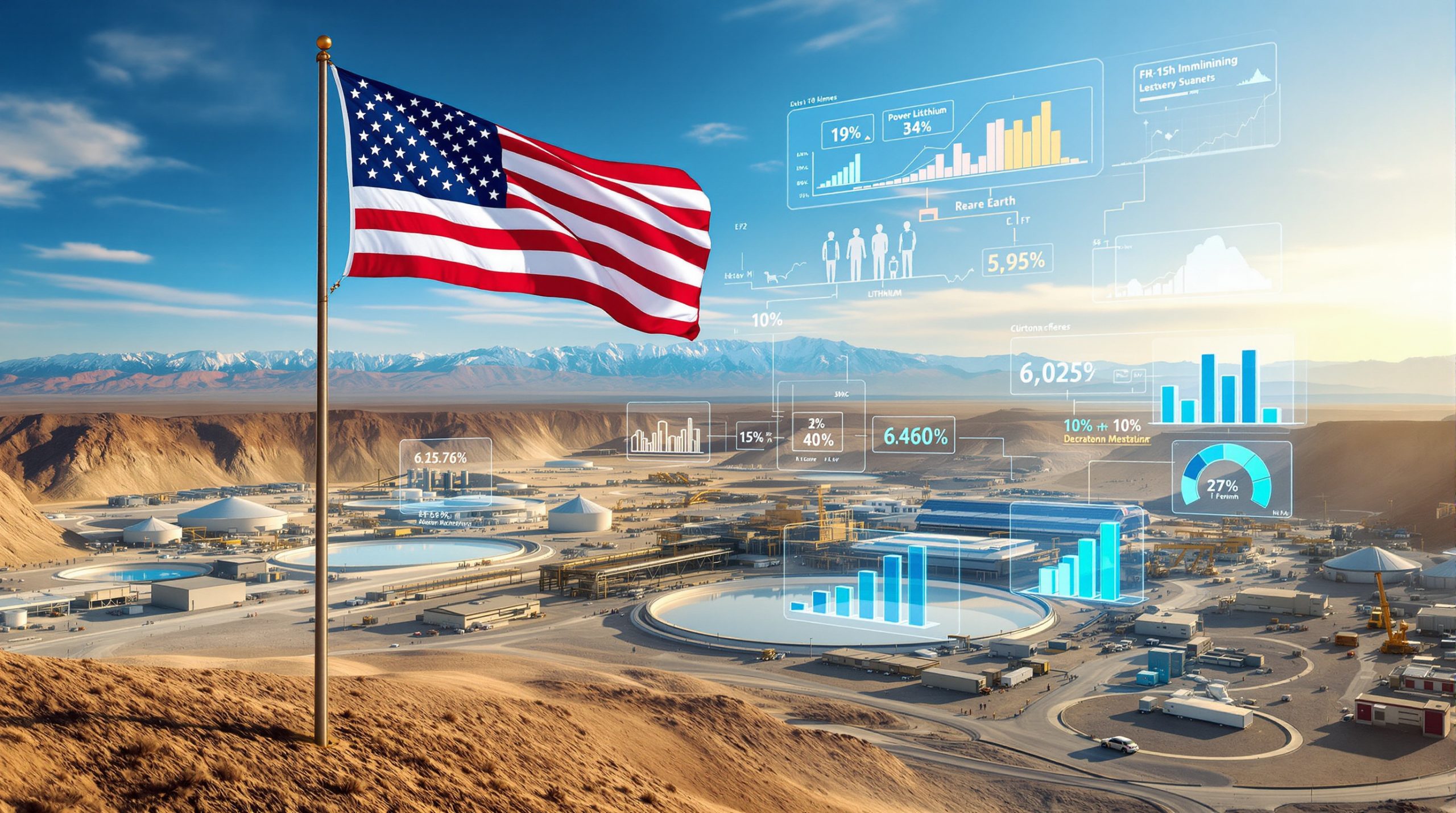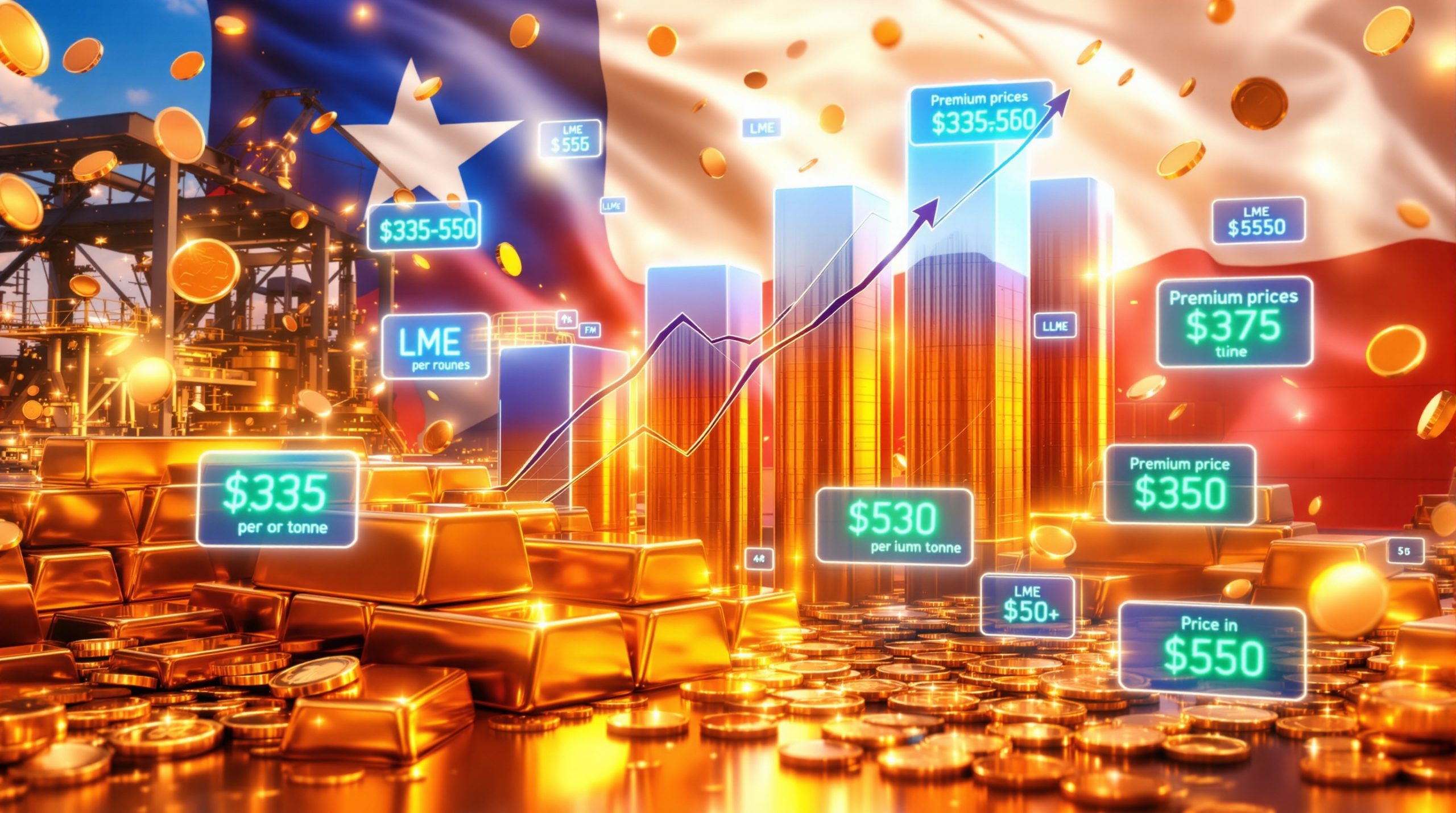Understanding Greenland's Strategic Position in Global Rare Earth Supply
The Arctic island of Greenland has emerged as a pivotal player in the global rare earth elements (REE) sector, representing both tremendous opportunity and significant challenges for Western nations seeking supply chain diversification. With substantial mineral deposits containing elements essential for modern technology—from electric vehicle motors to wind turbines—Greenland rare earth mining could fundamentally alter the international rare earth landscape.
Recent geopolitical tensions and supply chain vulnerabilities have intensified focus on Arctic mineral resources. Furthermore, the US-China Trade War impact and China's implementation of export controls in 2025 have accelerated Western governments' efforts to secure alternative rare earth sources, positioning Greenland as a potential cornerstone in reducing dependence on single-source suppliers.
The island's unique geological history has created concentrated deposits of critical elements including neodymium, praseodymium, dysprosium, and terbium. These materials form the backbone of renewable energy infrastructure, advanced electronics, and defence technologies that define modern industrial economies.
Analysing Greenland's Mineral Wealth and Global Market Impact
Comprehensive Assessment of Arctic Rare Earth Reserves
Greenland's rare earth potential stems from ancient geological processes that concentrated valuable minerals within accessible formations. The island's position within the North Atlantic Craton created unique conditions for rare earth mineralisation, resulting in deposits that exhibit both high grades and favourable metallurgical characteristics.
The Tanbreez Project represents the most significant development opportunity, with industry experts suggesting it could rank among the world's largest rare earth deposits. This massive formation contains substantial quantities of both light and heavy rare earth elements, offering potential for diversified production that could serve multiple market segments.
Key elements found in Greenland's deposits include:
- Neodymium: Essential for permanent magnets in electric vehicle motors and wind turbine generators
- Praseodymium: Critical component in high-performance magnet alloys
- Dysprosium: Vital for high-temperature magnet applications and electronic displays
- Terbium: Required for phosphor production and specialised magnetic materials
- Lanthanum: Used in battery electrodes and catalytic converter systems
The concentration and accessibility of these elements position Greenland as potentially transformative for Western supply security. Unlike many global rare earth deposits that require extensive processing to achieve commercial viability, several Greenland formations exhibit naturally higher concentrations that could reduce processing complexity and costs.
Market Positioning and Competitive Advantages
Greenland's strategic advantages extend beyond geological wealth to encompass political stability and geographic positioning. The island operates under Danish oversight within a stable democratic framework, providing predictable regulatory environments that contrast sharply with the political uncertainties affecting other global rare earth producers.
Geographic proximity to North American and European markets offers significant logistical benefits. In addition, shipping distances from Greenland to major industrial centres in the United States and European Union are substantially shorter than routes from traditional Asian sources, potentially reducing transportation costs and supply chain risks.
The island's integration within Western political and economic systems facilitates technology transfer, financing arrangements, and regulatory cooperation that would be challenging to achieve with suppliers in politically sensitive regions.
Major Deposit Locations Driving Development Interest
Tanbreez Project: Arctic Mining's Flagship Development
The Tanbreez Project, located in southern Greenland, represents the cornerstone of the island's rare earth ambitions. This deposit exhibits characteristics that distinguish it from many global competitors, including favourable ore grades and reduced radioactive element concentrations compared to other major formations.
Industry analysis suggests the deposit contains sufficient reserves to support decades of production at scales that could meaningfully impact global supply balances. However, the formation's coastal location provides crucial advantages for infrastructure development, reducing the logistical challenges that plague many Arctic mining ventures.
Key Tanbreez Project characteristics:
- Coastal accessibility enabling year-round shipping potential
- Diverse rare earth element portfolio supporting multiple market applications
- Reduced environmental complexity compared to radioactive deposits
- Established preliminary feasibility studies demonstrating economic viability
Alternative Deposits Expanding Development Options
Beyond Tanbreez, Greenland hosts numerous additional formations that could support future mining activities. The Sarfartoq Project north of the capital Nuuk offers another significant development opportunity with distinct advantages including lower radioactive element concentrations and proximity to existing infrastructure.
The Gardar Province contains multiple smaller deposits that collectively represent substantial mineral wealth. These formations include the Kringlerne and Motzfeldt Sø areas, each exhibiting unique geological characteristics that could support specialised rare earth applications.
Regional deposit distribution provides strategic benefits:
- Geographic diversification reducing single-point-of-failure risks
- Varying mineral compositions enabling product portfolio optimisation
- Multiple development timelines allowing phased production increases
- Infrastructure sharing opportunities reducing capital requirements
International Exploration and Licensing Activity
Greenland's critical minerals potential has attracted significant international attention, with exploration companies from multiple Western nations securing licences across the island. This activity reflects growing recognition of the Arctic's strategic importance within global supply chain planning.
Australian companies have demonstrated particular interest, leveraging their extensive mining expertise and Arctic operating experience. Canadian firms bring geographic proximity and cold-climate operational knowledge, while European companies offer financing capabilities and market access advantages.
The diversity of international involvement provides multiple pathways for project development whilst distributing risks across different corporate and national entities. This multi-national approach could accelerate development timelines while ensuring adequate financial backing for large-scale Arctic operations.
Arctic Operating Challenges and Infrastructure Requirements
Environmental and Logistical Constraints
Arctic mining operations face unique challenges that significantly impact both costs and operational complexity. Greenland's extreme climate creates equipment performance issues, seasonal accessibility limitations, and specialised workforce requirements that distinguish Arctic projects from temperate zone operations.
Temperature-related operational challenges include:
- Equipment performance degradation in extreme cold conditions
- Seasonal operational windows limiting continuous production
- Permafrost conditions complicating infrastructure development
- Energy requirements elevated due to heating and cold-weather equipment needs
Infrastructure limitations present significant barriers:
- Limited road networks requiring air and sea transport for all supplies
- Port facilities requiring significant upgrades for mining equipment handling
- Power generation infrastructure requiring development from baseline
- Communications systems needing specialised cold-weather installations
Workforce Development and Skills Requirements
Greenland's limited population of approximately 57,000 residents creates immediate constraints on local workforce availability for large-scale mining operations. The island's economy has historically focused on fishing and subsistence activities, providing limited mining expertise that international projects can utilise.
| Workforce Challenge | Impact on Development | Potential Solutions |
|---|---|---|
| Limited Local Population | Workforce shortage requiring imported labour | International worker programmes, local training initiatives |
| Minimal Mining Experience | Technical skills gap increasing training costs | Partnership with international mining schools, apprenticeship programmes |
| Regulatory Complexity | Employment law compliance costs | Legal consultation, regulatory navigation services |
| Remote Location Premium | Elevated wage requirements | Specialised compensation packages, quality-of-life improvements |
Successful Greenland rare earth mining development will require comprehensive workforce development programmes combining local capacity building with international expertise importation. These programmes must address both technical skills and cultural integration challenges inherent in Arctic industrial development.
Economic Analysis and Financial Realities
Cost Structure and Investment Requirements
Arctic mining operations typically experience cost multipliers significantly higher than temperate zone projects. Greenland's unique challenges create additional layers of expense that impact project economics and investment attractiveness.
Primary cost categories affecting Greenland projects:
- Equipment transport: Arctic logistics require specialised vessels and handling equipment
- Energy expenses: Fuel importation and cold-weather operational requirements
- Labour costs: Remote location premiums and specialised Arctic training requirements
- Environmental compliance: Enhanced monitoring and mitigation measures for Arctic ecosystems
Initial capital requirements for large-scale Greenland rare earth projects likely exceed traditional mining ventures by substantial margins. Infrastructure development alone—including port facilities, power generation, and worker accommodation—represents hundreds of millions in upfront investment before ore processing begins.
Development Timeline and Market Entry Projections
Realistic development schedules for Greenland rare earth projects extend well into the 2030s due to regulatory, environmental, and infrastructure challenges. This timeline contrasts sharply with market urgency for supply chain diversification, creating tension between immediate needs and practical development realities.
Projected development phases:
- 2025-2027: Environmental assessment completion and regulatory approval processes
- 2028-2030: Infrastructure development and financing finalisation
- 2031-2033: Construction and commissioning of processing facilities
- 2034+: Large-scale commercial production commencement
Investment Consideration: Greenland rare earth projects require patient capital with extended development horizons. Investors must balance strategic supply chain benefits against prolonged return timelines and elevated Arctic operational risks.
Financial modelling for Greenland projects must account for volatile rare earth pricing, currency exchange risks, and potential regulatory changes affecting Arctic industrial development. These factors create complexity requiring sophisticated risk management approaches.
Geopolitical Significance and Strategic Implications
Western Supply Chain Diversification Strategy
Greenland's emergence as a potential rare earth producer aligns with broader Western strategies to reduce dependence on concentrated supply sources. China's dominance in rare earth processing and export capabilities has created vulnerabilities that recent export control measures have highlighted dramatically.
The island's political stability under Danish governance provides predictable regulatory frameworks that facilitate long-term investment planning. This stability contrasts favourably with alternative suppliers in regions experiencing political uncertainty or adversarial relationships with Western nations.
Strategic advantages for Western supply chains:
- Democratic governance ensuring predictable regulatory environments
- Western-aligned political and economic systems facilitating cooperation
- NATO alliance relationships providing security assurances
- Geographic positioning reducing transportation vulnerabilities
International Cooperation and Funding Mechanisms
Western governments have demonstrated increasing willingness to support Greenland rare earth development through various funding mechanisms and policy initiatives. These efforts reflect recognition that mineral supply security represents a critical national security priority requiring government intervention.
Current support frameworks include:
- Export credit agency financing for feasibility studies and development
- Critical materials initiative funding from European Union programmes
- Bilateral investment treaties facilitating international partnerships
- Research and development support for Arctic mining technologies
The convergence of government support, private investment, and strategic necessity creates favourable conditions for Greenland project development despite inherent challenges. This alignment suggests sustained political commitment to Arctic mineral development over extended timelines.
Environmental and Social Responsibility Framework
Comprehensive Environmental Assessment Requirements
Greenland's pristine Arctic environment demands exceptional environmental stewardship that exceeds standards applied in many global mining jurisdictions. The island's ecosystem fragility and international environmental significance create regulatory requirements that substantially impact project development approaches.
Environmental assessment frameworks encompass:
- Comprehensive ecosystem impact studies covering terrestrial and marine environments
- Wildlife migration pattern analysis ensuring minimal disruption to Arctic species
- Climate change vulnerability assessments addressing long-term environmental impacts
- Cumulative impact evaluations considering multiple development projects simultaneously
Arctic mining operations must demonstrate exceptional environmental performance to maintain social licence and regulatory approval. Consequently, this requirement drives adoption of advanced technologies and best practices that may exceed industry standards elsewhere, particularly in sustainability in mining initiatives.
Community Engagement and Cultural Considerations
Greenland's indigenous Inuit population maintains traditional relationships with the land that mining development must respect and accommodate. Successful projects require genuine community engagement that addresses cultural concerns whilst providing meaningful economic benefits to local residents.
Social licence requirements include:
- Comprehensive consultation processes involving all affected communities
- Traditional land use impact assessments incorporating indigenous knowledge
- Revenue sharing arrangements ensuring local economic benefits
- Cultural heritage site protection protocols preventing historical site damage
Mining companies must demonstrate long-term commitment to community partnership rather than extractive relationships that provide minimal local benefits. This approach requires sustained investment in community development and cultural preservation initiatives.
Future Market Dynamics and Technology Development
Demand Projections and Market Evolution
Global rare earth demand continues expanding across multiple sectors driven by technological advancement and environmental policy changes. Electric vehicle adoption, renewable energy deployment, and electronics miniaturisation create sustained growth prospects that support Arctic development economics despite elevated costs.
Key demand drivers include:
- Electric vehicle production: Projected growth requiring substantial permanent magnet materials
- Wind energy expansion: Turbine installations driving neodymium and dysprosium consumption
- Electronics advancement: Miniaturisation trends increasing high-purity element requirements
- Defence applications: Advanced weapons systems requiring specialised magnetic materials
Market analysis suggests demand growth rates will outpace supply expansion from existing sources, creating market opportunities for new producers despite higher cost structures. This supply-demand imbalance provides economic justification for Arctic development investment.
What Technologies Are Revolutionising Arctic Mining?
Arctic mining success depends heavily on technological advancement reducing operational costs and environmental impacts. Ongoing research and development efforts focus on solutions specifically designed for extreme climate operations.
Emerging technology solutions include:
- Advanced extraction techniques minimising environmental disruption
- AI in drilling & blasting operations reducing workforce requirements in extreme conditions
- Mobile processing units enabling flexible operational approaches
- Renewable energy integration reducing fossil fuel dependence
These technological developments could fundamentally alter Arctic mining economics by reducing both costs and environmental impacts. Early adoption of advanced technologies may provide competitive advantages for Greenland rare earth mining projects entering global markets.
Investment Outlook and Strategic Recommendations
Risk Assessment and Return Projections
Greenland rare earth investments involve unique risk profiles that differ significantly from traditional mining ventures. Arctic operational challenges, extended development timelines, and geopolitical considerations create complexity requiring sophisticated investment approaches.
Primary investment risks include:
- Extended development timelines delaying return realisation
- Elevated operational costs reducing profit margins
- Environmental regulatory changes affecting project viability
- Market price volatility impacting revenue projections
However, strategic supply chain benefits and growing market demand provide compelling investment rationales for patient capital willing to accept elevated risks in exchange for significant long-term returns.
Market Entry Strategies and Portfolio Considerations
Successful Greenland rare earth investment requires diversified approaches that spread risks across multiple projects and development stages. Early-stage exploration investments offer highest return potential but carry corresponding risk levels that require careful portfolio balancing.
For instance, implementing diversification investing strategies proves particularly important given the unique challenges of Arctic operations.
Recommended investment approaches:
- Diversified project portfolios spreading risks across multiple deposits
- Phased investment strategies allowing risk assessment at development milestones
- Strategic partnerships with experienced Arctic operators
- Government-backed financing mechanisms reducing political and regulatory risks
Greenland represents a unique intersection of strategic necessity, geological opportunity, and development challenge that could define rare earth supply chains for decades. Success will require sustained commitment, technological innovation, and exceptional environmental stewardship in one of the world's most demanding operational environments.
Disclaimer: This analysis contains forward-looking statements and projections that involve significant uncertainties. Arctic mining development faces numerous challenges including environmental, regulatory, and economic factors that could materially affect project outcomes. Investors should conduct comprehensive due diligence and consider all risk factors before making investment decisions related to Greenland's rare earth mining development.
Want to Capitalise on Arctic Mining Opportunities?
Discovery Alert's proprietary Discovery IQ model delivers instant notifications on significant ASX mineral discoveries, including critical materials projects that could benefit from growing global supply chain concerns. Explore Discovery Alert's proven track record with historic mineral discoveries and begin your 30-day free trial today to position yourself ahead of market developments in the evolving rare earth sector.




